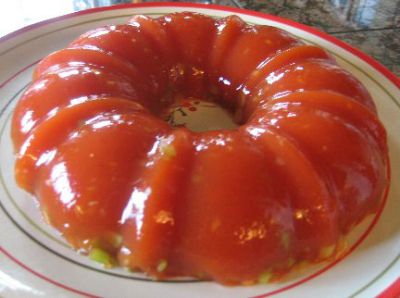That looks truly revolting TBH but each to his/her own.Kath wrote:I have a great recipe for studinina. I was thinking I could put it in the food thread, but this seems so much more appropriate. I'll BBL to enlighten you all.
NHL 2017 -Official Discussion Thread
-
Montegriffo

- Posts: 18718
- Joined: Wed Nov 30, 2016 7:14 am
Re: NHL 2017 -Official Discussion Thread
For legal reasons, we are not threatening to destroy U.S. government property with our glorious medieval siege engine. But if we wanted to, we could. But we won’t. But we could.


-
K@th
- Posts: 3513
- Joined: Wed Nov 30, 2016 8:39 am
Re: NHL 2017 -Official Discussion Thread
It's revolting food for a revolting thread. My Ukrainian grandmother used to make that shit on the regular. My father and sister would gobble that up, but never fast enough - it usually hung around the fridge for days and days...Montegriffo wrote:That looks truly revolting TBH but each to his/her own.Kath wrote:I have a great recipe for studinina. I was thinking I could put it in the food thread, but this seems so much more appropriate. I'll BBL to enlighten you all.
Account abandoned.
-
Montegriffo

- Posts: 18718
- Joined: Wed Nov 30, 2016 7:14 am
Re: NHL 2017 -Official Discussion Thread
Now everyone is up to speed on Duckworth-Lewis we can move on to Leg Before Wicket or LBW.
The definition of leg before wicket (lbw) is currently Law 36 in the Laws of Cricket, written by the Marylebone Cricket Club (MCC).[2] Before a batsman can be dismissed lbw, the fielding team must appeal to the umpire.[3] If the bowler delivers a no-ball — an illegal delivery — the batsman cannot be out lbw under any circumstances.[2] Otherwise, for the batsman to be adjudged lbw, the ball, if it bounces, must pitch in line with or on the off side of the wickets.[notes 1][notes 2] Then the ball must strike part of the batsman's body without first touching his bat,[notes 3] in line with the wickets and have been going on to hit the stumps. The batsman may also be out lbw if, having made no attempt to hit the ball with his bat, he is struck outside the line of off stump by a ball that would have hit the wickets. The umpire must assume that the ball would have continued on the same trajectory after striking the batsman, even if it would have bounced before hitting the stumps.
A batsman can be out lbw even if the ball did not hit his leg: for example, a batsman struck on the head could be lbw. However, he cannot be lbw if the ball pitches on the leg side of the stumps ("outside leg stump"),[notes 4] even if the ball would have otherwise hit the wickets.[7] Similarly, a batsman who has attempted to hit the ball with his bat cannot be lbw if the ball strikes him outside the line of off stump.[8] However, some shots in cricket, such as the switch hit or reverse sweep, involve the batsman switching between a right- and left-handed stance; this affects the location of the off and leg side, which are determined by the stance. The law explicitly states that the off side is determined by the batsman's position when the bowler commences his run-up.[2][9][10]
External image BBC slide show illustrating the lbw law
According to MCC guidelines for umpires, factors to consider when giving an lbw decision include the angle at which the ball was travelling and whether the ball was swinging through the air. He must also account for the height of the ball at impact and how far from the wicket the batsman was standing; from this information he must determine if the ball would have passed over the stumps or struck them.[11] The MCC guidance states that it is easier to make a decision when the ball strikes the batsman without pitching, but that the difficulty increases when the ball has bounced and more so when there is a shorter time between the ball pitching and striking the batsman.[11]
For legal reasons, we are not threatening to destroy U.S. government property with our glorious medieval siege engine. But if we wanted to, we could. But we won’t. But we could.


-
Montegriffo

- Posts: 18718
- Joined: Wed Nov 30, 2016 7:14 am
Re: NHL 2017 -Official Discussion Thread
Controversy and attempted reform
a cricketer standing in front of some stumps, preparing to hit the ball
Arthur Shrewsbury, one of the first batsmen to use his pads to prevent the ball hitting his wicket
In essence, the lbw law remained the same between 1839 and 1937, despite several campaigns to have it changed. An 1863 proposal to allow a batsman to be lbw if the ball hit his body at any point between the wickets, regardless of where the ball pitched or whether it would hit the wicket at all, came to nothing.[13] There were few complaints until the proportion of lbw dismissals in county cricket began to increase during the 1880s.[13] Until then, batsmen used their pads only to protect their legs; their use for any other purposes was considered unsporting, and some amateur cricketers did not wear them at all. As cricket became more organised and competitive, some batsmen began to use their pads as a second line of defence: they lined them up with the ball so that if they missed with the bat, the ball struck the pad instead of the wicket. Some players took this further; if the delivery was not an easy one from which to score runs, they attempted no shot and allowed the ball to bounce safely off their pads. Arthur Shrewsbury was the first prominent player to use such methods, and others followed. Criticism of this practice was heightened by the increased quality and reliability of cricket pitches, which made batting easier, led to higher scores and created a perceived imbalance in the game.[14]
Several proposals were made to prevent pad-play. At a meeting of representatives of the main county cricket clubs in 1888, one representative expressed the opinion that a "batsman who defended his wicket with his body instead of with his bat should be punished".[15] The representatives supported a motion to alter the law to state that the batsman would be out if he stopped a ball that would have hit the wicket;[notes 6] in contrast to the existing wording, this took no account of where the ball pitched relative to the wickets.[15] Further proposals included one in which the intent of the batsman was taken into account, but no laws were changed and the MCC merely issued a condemnation of the practice of using pads for defence. This reduced pad-play for a short time, but when it increased again, a second pronouncement by the MCC had little effect.[16]
Further discussion on altering the law took place in 1899, when several prominent cricketers supported an amendment similar to the 1888 proposal: the batsman would be out if the ball would have hit the wicket, where it pitched was irrelevant.[17] At a Special General Meeting of the MCC in 1902, Alfred Lyttelton formally proposed this amendment; the motion was supported by 259 votes to 188, but failed to secure the two-thirds majority required to change the laws.[18][19] A. G. Steel was the principal opponent of the change, as he believed it would make the task of the umpires too difficult, but he later regretted his stance. Lyttelton's brother, Robert, supported the alteration and campaigned for the rest of his life to have the lbw law altered. As evidence that pad-play was increasing and needed to be curtailed, he cited the growing number of wickets which were falling lbw: the proportion rose from 2% of dismissals in 1870 to 6% in 1890, and 12% in 1923.[18] In 1902, the proposed new law was tried in the Minor Counties Championship, but deemed a failure.[18] An increase in the size of the stumps was one of several other rejected proposals at this time to reduce the dominance of batsmen over bowlers.[20
For legal reasons, we are not threatening to destroy U.S. government property with our glorious medieval siege engine. But if we wanted to, we could. But we won’t. But we could.


-
Montegriffo

- Posts: 18718
- Joined: Wed Nov 30, 2016 7:14 am
Re: NHL 2017 -Official Discussion Thread
Alteration to the law
Between 1900 and the 1930s, the number of runs scored by batsmen, and the proportion of lbw dismissals, continued to rise.[21] Bowlers grew increasingly frustrated with pad-play and the extent to which batsmen refused to play shots at bowling directed outside the off stump, simply allowing it to pass by. The English fast bowler Harold Larwood responded by targeting leg stump, frequently hitting the batsman with the ball in the process. This developed into the controversial Bodyline tactics he used in Australia in 1932–33.[22] Some batsmen began to go further and preferred to kick away balls pitched outside off stump—reaching out to kick the ball instead of allowing it to hit their pads—if they presented any threat, knowing that they could not be dismissed lbw.[23] The authorities believed these developments represented poor entertainment value.[24] At the height of the Bodyline controversy in 1933, Donald Bradman, the leading Australian batsman and primary target of the English bowlers, wrote to the MCC recommending an alteration of the lbw law to create more exciting games.[25]
A head shot of a man in a blazer.
Bob Wyatt opposed the revision of the lbw law in 1935 and campaigned against it until his death.
To address the problem, and redress the balance for bowlers, the MCC made some alterations to the laws. The size of the ball was reduced in 1927, and that of the stumps increased in 1931,[26] but the changes had little effect.[21] Between 1929 and 1933, county authorities conducted a trial in which a batsman could be lbw if he had hit the ball onto his pads.[21][27] Then, in 1935, an experimental law was introduced in which the batsman could be dismissed lbw even if the ball pitched outside the line of off stump—in other words, a ball that turned or swung into the batsman but did not pitch in line with the wickets. However, the ball was still required to strike the batsman in line with the wickets. The umpire signalled to the scorers when he declared a batsman out under the new rule, and any such dismissal was designated "lbw (n)" on the scorecard.[21]
Several leading batsmen opposed the new law, including the professional Herbert Sutcliffe, known as an exponent of pad-play, and amateurs Errol Holmes and Bob Wyatt. Wisden Cricketers' Almanack noted that these three improved their batting records during the 1935 season, but batsmen generally were less successful. There were also fewer drawn matches.[28] There was an increase in the number of lbws[21]— out of 1,560 lbw dismissals in first-class matches in 1935, 483 were given under the amended law. Wisden judged the experiment a success and several of its opponents changed their mind by the end of the season;[29] batsmen soon became accustomed to the alteration.[21] Although Australian authorities were less convinced, and did not immediately introduce the revision into domestic first-class cricket,[30] in 1937 the new rule became part of the Laws of Cricket.[21]
According to Gerald Brodribb, in his survey and history of the Laws, the change produced more "enterprising", exciting cricket but any alteration in outlook was halted by the Second World War. When the sport resumed in 1946, batsmen were out of practice and the amended lbw law played into the hands of off spin and inswing bowlers, who began to dominate county cricket.[21] The cricket historian Derek Birley notes that many of these bowlers imitated the methods of Alec Bedser, an inswing bowler who was successful immediately after the war, but that the resulting cricket was unexciting to watch. The revised lbw law, and other alterations in the game in favour of the bowler, further encouraged such bowling.[31] The new law continued to provoke debate among writers and cricketers; many former players claimed that the alteration had caused a deterioration in batting and reduced the number of shots played on the off side.[24] A 1963 report in The Times blamed the law for reducing the variety of bowling styles: "the change has led to a steady increase in the amount of seam and off-spin bowling. Whereas in the early thirties every county had a leg spinner and an orthodox left arm spinner, leg spinners, at any rate, are now few and far between. Walk on to any of the first-class grounds at any time tomorrow and the chances are that you will see the wicketkeeper standing back and a medium pace bowler in action ... there is little doubt that the game, as a spectacle, is less attractive than it was."[32] Several critics, including Bob Wyatt, maintained that the lbw law should be returned to its pre-1935 wording;[32] he campaigned to do so until his death in 1995.[33] On the other hand, Bradman, in the 1950s, proposed extending the law so that batsmen could be lbw even if they were struck outside the line of off stump.[34] An MCC study of the state of cricket, carried out in 1956 and 1957, examined the prevalent and unpopular tactic involving off-spin and inswing bowlers aiming at leg stump with fielders concentrated on the leg side. Rather than alter the lbw law to combat the problem, the MCC reduced the number of fielders allowed on the leg side.[23]
For legal reasons, we are not threatening to destroy U.S. government property with our glorious medieval siege engine. But if we wanted to, we could. But we won’t. But we could.


-
Montegriffo

- Posts: 18718
- Joined: Wed Nov 30, 2016 7:14 am
Re: NHL 2017 -Official Discussion Thread
What are the bits suspended in aspic? Is it fish or meat based?Kath wrote:It's revolting food for a revolting thread. My Ukrainian grandmother used to make that shit on the regular. My father and sister would gobble that up, but never fast enough - it usually hung around the fridge for days and days...Montegriffo wrote:That looks truly revolting TBH but each to his/her own.Kath wrote:I have a great recipe for studinina. I was thinking I could put it in the food thread, but this seems so much more appropriate. I'll BBL to enlighten you all.
For legal reasons, we are not threatening to destroy U.S. government property with our glorious medieval siege engine. But if we wanted to, we could. But we won’t. But we could.


-
StCapps

- Posts: 16879
- Joined: Wed Nov 30, 2016 10:59 am
- Location: Hamilton, Ontario
Re: NHL 2017 -Official Discussion Thread
Lack of consistency, your calling card as moderator. Go on with your bad self monte, told you the cricket talk would just be you talking to yourself.Kath wrote:I think the "should kath be a mod thread," is more appropriate for this content, but who am I to squash your free speech?
*yip*
-
Montegriffo

- Posts: 18718
- Joined: Wed Nov 30, 2016 7:14 am
Re: NHL 2017 -Official Discussion Thread
Food in aspic was a favorite in Victorian England and was popular till about the 50's.


For legal reasons, we are not threatening to destroy U.S. government property with our glorious medieval siege engine. But if we wanted to, we could. But we won’t. But we could.


-
Montegriffo

- Posts: 18718
- Joined: Wed Nov 30, 2016 7:14 am
Re: NHL 2017 -Official Discussion Thread
Even a veggie version made with tomato looks unpleasant.


For legal reasons, we are not threatening to destroy U.S. government property with our glorious medieval siege engine. But if we wanted to, we could. But we won’t. But we could.


-
Montegriffo

- Posts: 18718
- Joined: Wed Nov 30, 2016 7:14 am
Re: NHL 2017 -Official Discussion Thread
Sorry, can't hear you over my liberty.StCapps wrote:Lack of consistency, your calling card as moderator. Go on with your bad self monte, told you the cricket talk would just be you talking to yourself.Kath wrote:I think the "should kath be a mod thread," is more appropriate for this content, but who am I to squash your free speech?
For legal reasons, we are not threatening to destroy U.S. government property with our glorious medieval siege engine. But if we wanted to, we could. But we won’t. But we could.



